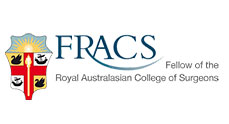The calcaneus or heel bone is a large bone found on the rear part of the foot. The calcaneus connects with the talus and cuboid bones to form the subtalar joint of the foot. A fracture is a break in a bone from trauma or various disease conditions. The types of fracture to the calcaneus depend on the severity and include stable fractures, displaced fractures, open fractures, closed fractures and comminuted fractures.
A fracture of the calcaneus is most commonly due to a traumatic event such as falling from a height, twisting injury, motor accidents, sports injuries and ankle sprain.
Fracture of the calcaneus is considered serious and can cause longstanding problems if not treated correctly. Stiffness and pain in the joint and arthritis are commonly reported risks of a calcaneal fracture.
The commonly seen signs and symptoms of calcaneal fractures are
- Pain in the heel
- Swelling in the heel
- Bruises in the heel
- Inability to walk or bear weight on the foot
The evaluation of the calcaneal fracture is done by imaging i.e., X-ray and CT scan. Based on the severity of the fracture, the doctor recommends the plan of treatment.
Calcaneal fractures are treated based on the type of fracture and extent of soft tissue damage.
Nonsurgical treatment
- Rest, ice, compression, and elevation (R.I.C.E.) – is the most commonly used treatment option. Staying off (resting) the injured foot can heal the fracture to a great extent. Covering the affected area with ice packs over a towel reduces swelling and pain. Compression stockings and elastic bandages can also aid in healing the pain. Positioning the feet above the level of heart reduces swelling.
- Immobilization – Casting the injured foot prevents the fractured bone from moving. Walking with the help of crutches is advisable to avoid bearing body weight until healing has occurred.
Surgical treatment
- Open reduction and internal fixation – This surgery involves putting the bone fragments back together with metal plates and screws to reposition them and set them to normal alignment.
- Percutaneous screw fixation – This is the best preferred treatment in cases where the bone pieces are large. The bone can either be pushed or pulled to set into place without making a large incision. Metal screws are then inserted and fixed through small incisions to hold the bone pieces together.
Rehabilitation
Irrespective of the treatment procedure, the patient is recommended to undergo physiotherapy and practice simple exercises regularly to help restore function. This would help the muscles to gain flexibility and after complete recovery, the patient can resume their daily living with normal activities.





